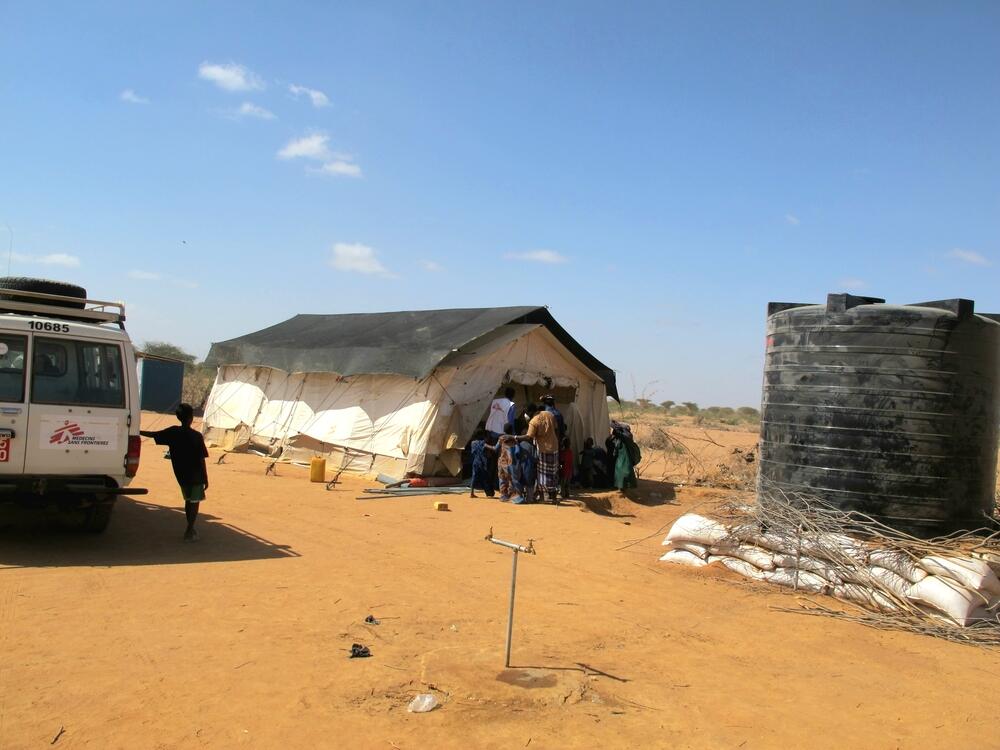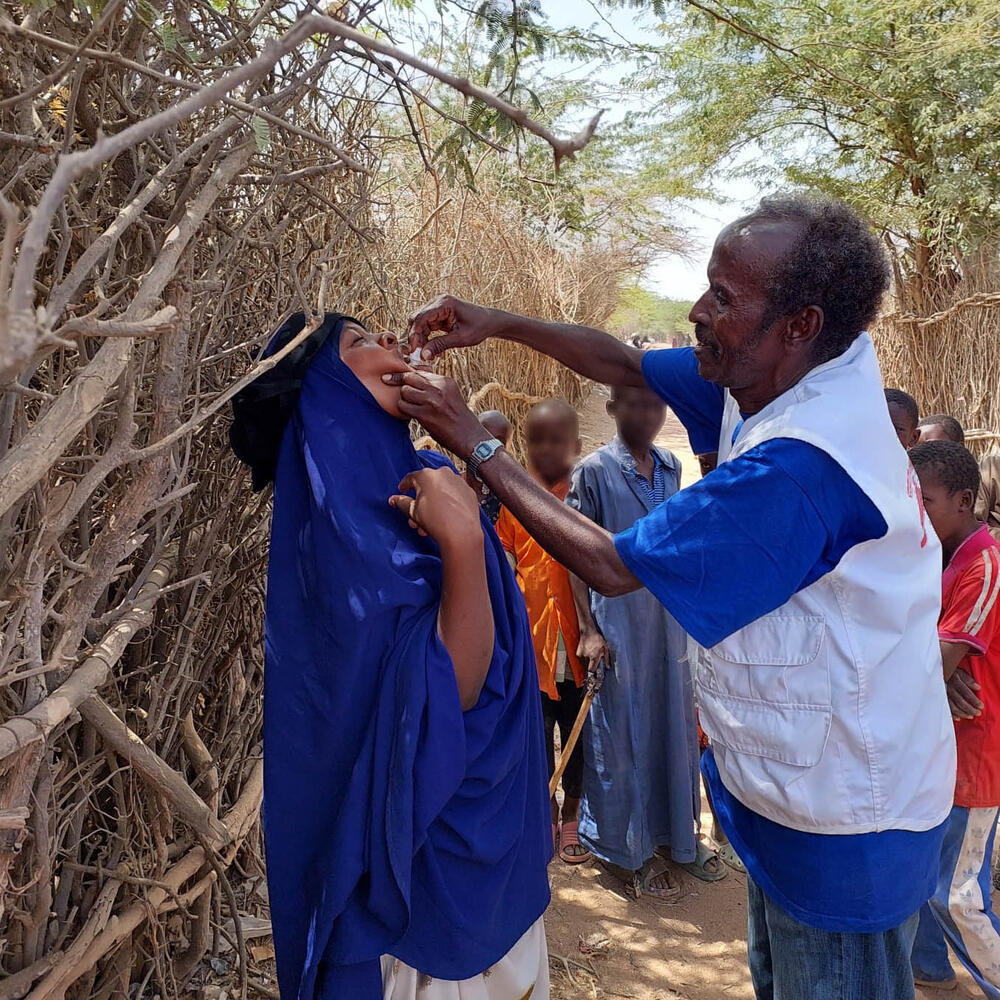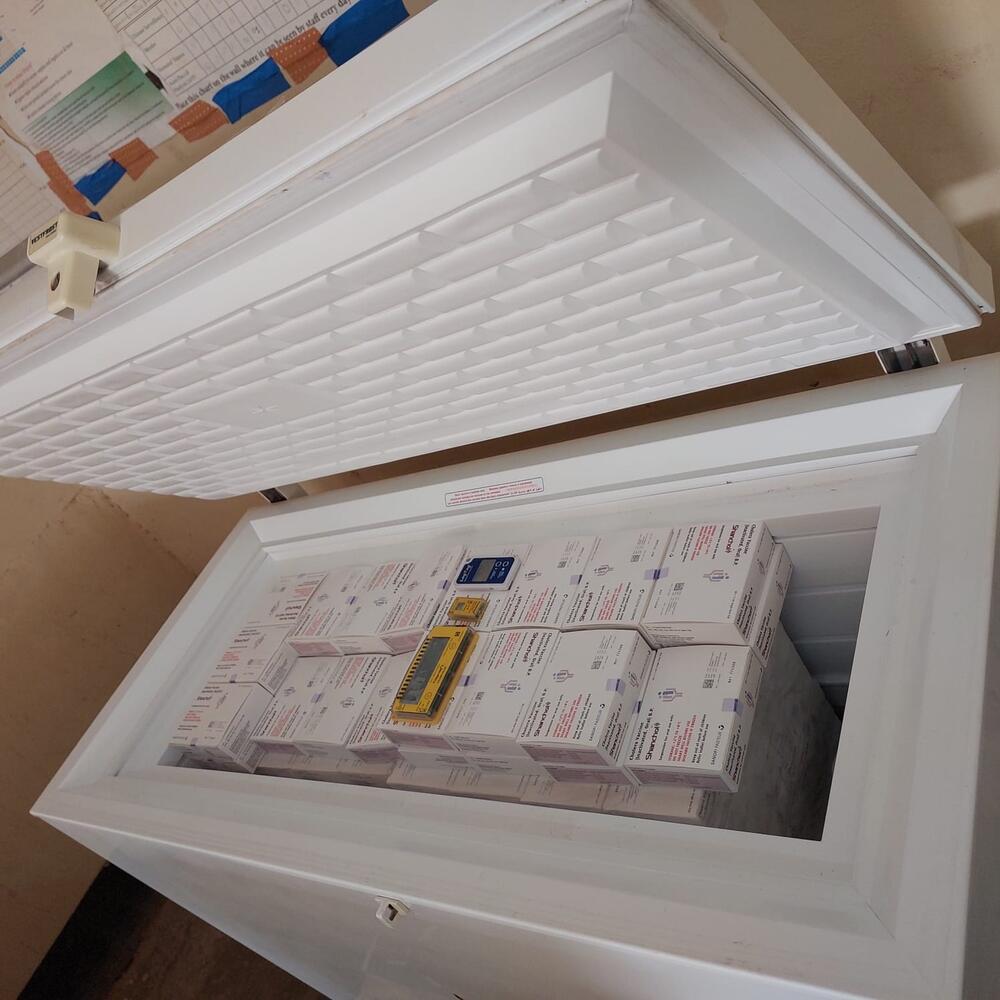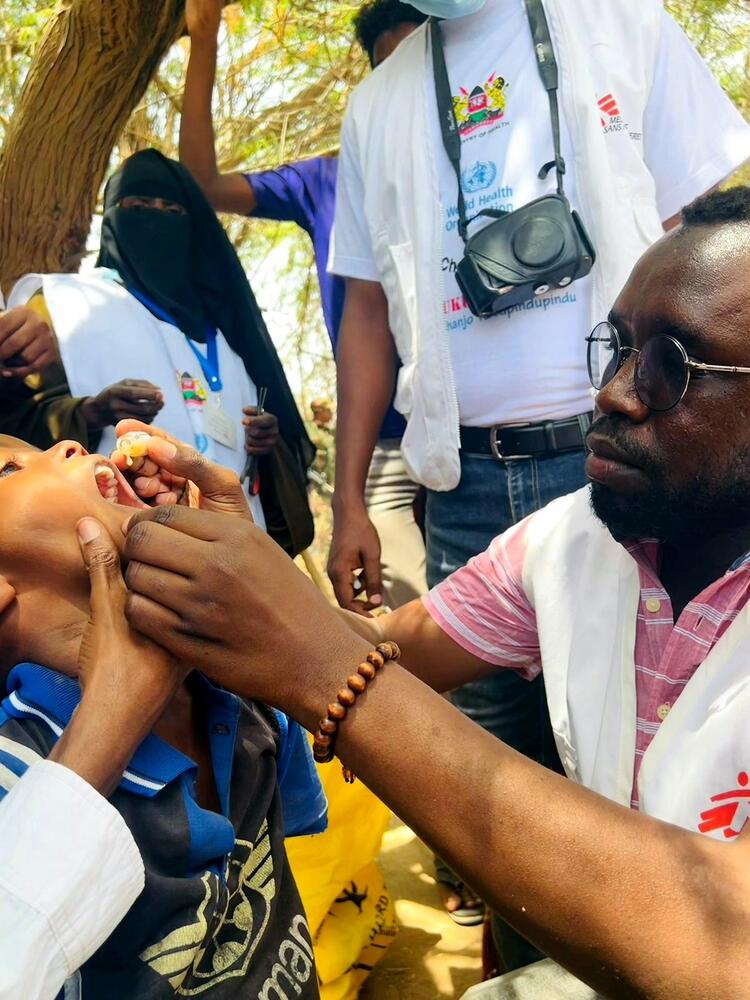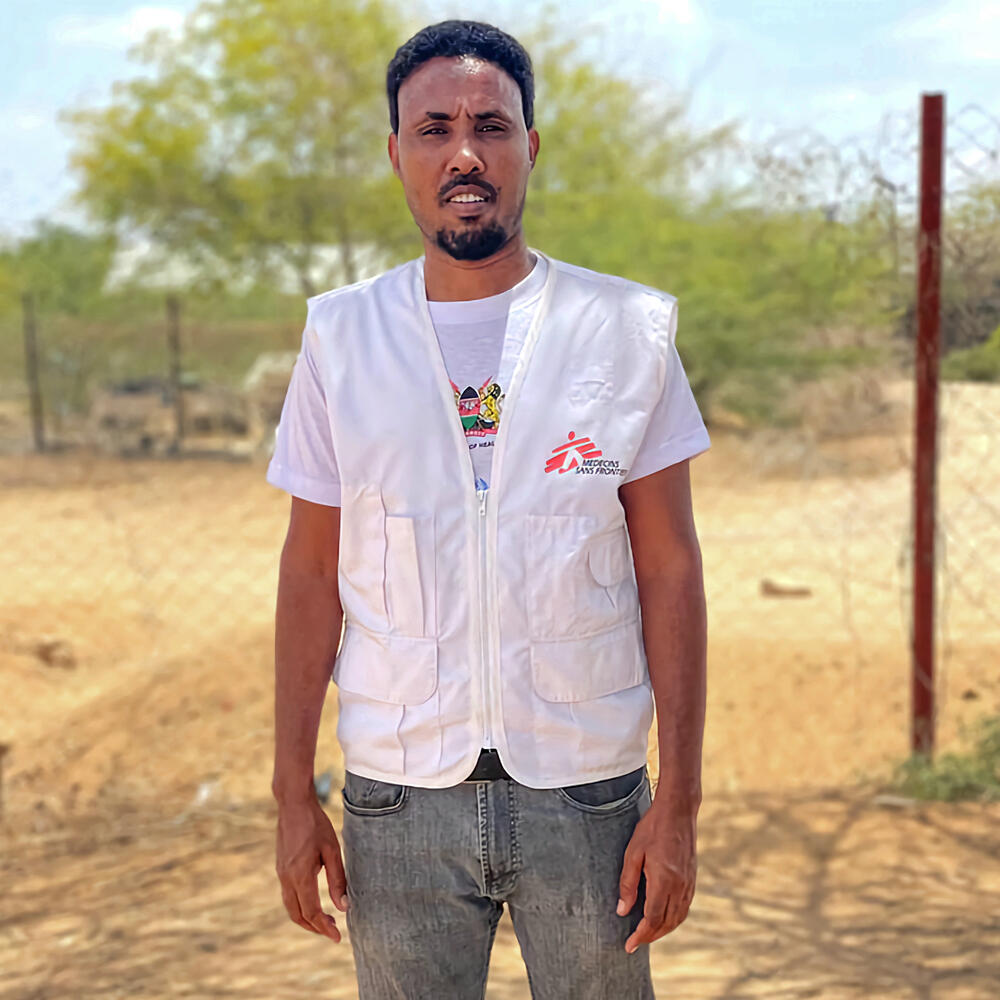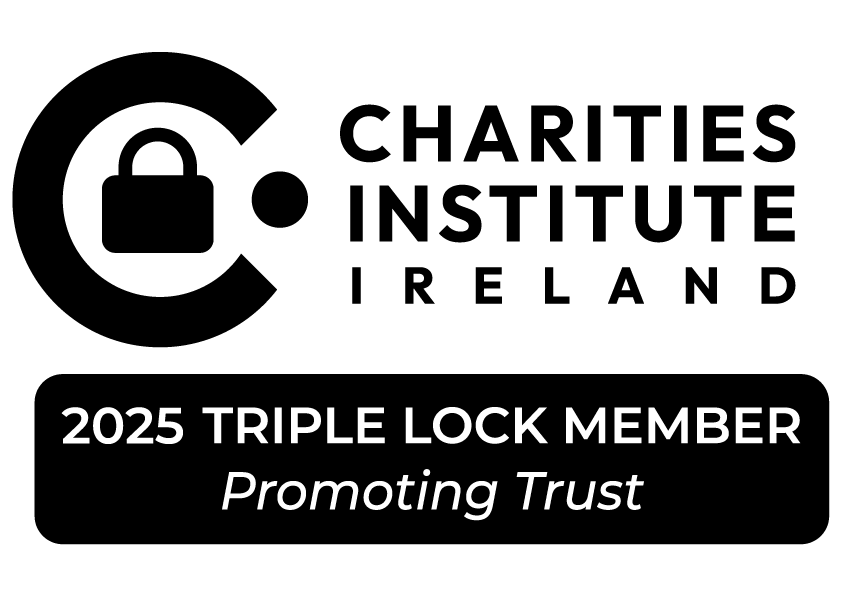Kenya: Continuous vaccinations, clean water and sanitation are vital in preventing cholera outbreaks
2 March 2023
On February 11, Kenya’s Ministry of Health rolled out the first ever cholera vaccination campaign in the country, targeting 2.2 million people in four counties, including Garissa County. The 10-day oral vaccination campaign aimed to prevent more outbreaks and reduce transmission and deaths.
Doctors Without Borders/Médecins Sans Frontières (MSF) has provided health care in and nearby Dadaab, a refugee complex in Kenya, for most of the camp’s over 30-year existence. Here, Hussein Mohamed Yussuf, MSF’s Expanded Programme on Immunization (EPI) focal point, explains how MSF worked with the Ministry of Health and its partners to coordinate the cholera vaccination campaign reaching 122,832 people in Dagahaley.
Why is this vaccination campaign so vital for people in Dagahaley ?
Cholera is endemic in Kenya, with outbreak occurring during different periods, also influenced by climate change. However, this outbreak has been longer than usual, lasting more than four months.
Four regions in Kenya that had the highest active cholera cases were prioritized for the vaccination, including Dadaab, where MSF provides healthcare in Dagahaley.
Cholera is a highly contagious disease and is often reported in areas without clean water and proper sanitation. In Dadaab, overcrowded living conditions, short rains in December, and severe drought have impacted water access and sanitation.
Insufficient funding caused a reduction in sanitation activities. There are not enough latrines in the camp, meaning many people are forced to defecate in the open.
In Dagahaley, MSF’s vaccination campaign targeted everyone above the age of one with a single dose of the oral cholera vaccine. Our teams reached 122,832 people—97 percent of the camp. They also revisit areas to reach people who may not have received the vaccinations, newly arriving refugees residing outside the camps, and the host community.
The cholera vaccination campaign in Dadaab camps and the surrounding communities will hopefully prevent large-scale outbreaks and save lives.
How is a vaccination campaign of this size coordinated?
A lot of logistical support and community outreach and education is involved in vaccination campaigns.
Once the vaccines were received from the Ministry of Health, MSF transported the vaccines from Garissa to Dagahaley. This is not an easy task as the vaccine must be constantly stored at a cold temperature—known as the cold chain—requiring insulated vaccine carriers, refrigerators, and cool boxes to ensure the vaccine does not spoil.
MSF coordinated 35 teams comprised of sanitation, bio-medical, transportation, mobilization, data and vaccination staff supported by the World Health Organization (WHO), to ensure vaccines reached people in the camp.
Reaching everyone in Dagahaley was not easy, but with support from the community, a great team with experience and knowledge of the community, we managed to reach almost everyone.
What made this a successful vaccination campaign?
Educating the community about the importance of vaccination and what the campaign entails is essential to gain community acceptance to ensure we can reach as many people as possible.
We started by reaching out to community leaders in Dagahaley, from the camp and host community, weeks before vaccination started. We held meetings with camp leaders, block leaders, religious leaders, youth leaders, and community health committees. This created a demand for and support of the vaccinations while also sharing information about the vaccine, its safety, and the impact it will have for people in the camp. They became the main mobilizers in the community.
The messages we shared with the community echoed radio messaging by the WHO and UNICEF. We engaged people in the community to spread educational messaging using megaphones and public address speakers.
What is the current humanitarian situation in Dagahaley?
People living in Dadaab camp, and the host community are particularly vulnerable due to the poor sanitation situation. Moreover, overcrowding is only getting worse as there has been a steady influx of new arrivals into the camp.
Most of the new arrivals are coming across the border from Somalia, which is also experiencing cholera outbreaks. As the number of unvaccinated people increases in the camp, protection against the disease will decrease, so it is vital to vaccinate people as soon as they arrive.
With the current global vaccine shortage, there is need for more vaccines to ensure people get longer time protection, thus reducing the severity and spread of cholera.
Beyond vaccination, ensuring people’s protection against cholera is increased through continuous vaccinations, sustained improvement of sanitation, including access to clean water, in the camps is imperative as humanitarian needs rise.
The oral cholera vaccination will not prevent cholera outbreaks alone if access to clean water, sanitation, and public health aspects remain unaddressed.
Kenya has experienced an ongoing cholera outbreak since October 2022. The first case of cholera was reported on October 8, 2022, in Kiambu county—which borders the capital, Nairobi—and has since been reported in 16 of the country’s 47 counties. 1,875 cholera cases have been recorded in Dadaab camp, a refugee complex in Kenya’s Garissa County, hosting more than 233,000 refugees and asylum seekers in three camps: Dagahaley, Ifo, and Hagadera.
